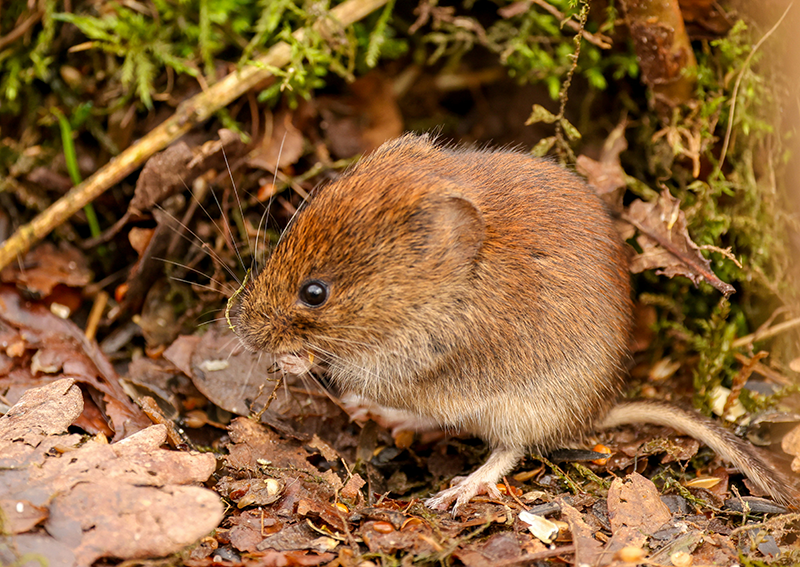Proven Vole Control Methods to Safeguard Your Property
Proven Vole Control Methods to Safeguard Your Property
Blog Article
Comprehensive Guide to Reliable Vole Insect Control: Problem Identification and Treatment Methods
In the world of reliable pest control, vole problems pose a distinct obstacle that demands a strategic approach. These small rodents, often mistaken for computer mice, can ruin gardens, lawns, and crops if left uncontrolled. Determining the signs of vole presence and implementing targeted therapy techniques are crucial elements of an effective pest monitoring strategy. By exploring the nuances of vole actions, comprehending crucial indications of problem, and evaluating a variety of control options, one can create a thorough method to fight these elusive insects.
Recognizing Vole Habits
Vole actions is defined by their delving behaviors and rapid recreation prices, making them a difficult pest to manage efficiently. These little rodents typically produce detailed tunnel systems underground, utilizing them for shelter, food storage space, and transportation. Voles are herbivores, consuming a range of plants, grasses, bulbs, and origins, which can create substantial damages to yards, orchards, and grass. Their fast reproductive rate additional makes complex control initiatives, with women with the ability of producing several litters in a solitary year, each containing several children.
Voles are most active throughout the morning and night hours, investing most of their time foraging for food. Their delving habits not only disturb lawns and gardens but likewise make them challenging to remove and spot. Comprehending vole behavior is important for effective parasite control techniques. By identifying their burrow locations, checking feeding locations, and executing targeted control methods, such as trapping or habitat alteration, vole invasions can be taken care of efficiently.
Indications of Vole Problem

Avoidance Approaches
Implementing effective avoidance methods is crucial in lessening vole invasions and protecting plant life from their destructive feeding behaviors (vole pest control). To stop vole infestations, it is necessary to start by removing potential food sources and sanctuary. Keep yard and plant life trimmed short, get rid of weeds and debris, and keep a clean yard or yard to make the location less appealing to voles. Setting up obstacles such as hardware towel or below ground fencing can also assist discourage voles from going into particular areas. Additionally, minimizing excess dampness by taking care of dripping pipelines and making certain proper drain can make the environment much less congenial for voles.
Consistently checking the residential property for signs of vole task, such as runways and burrow openings, is crucial for early detection and prompt activity. If vole task is thought, consider utilizing repellents or traps tactically put near their pathways. Using natural killers like owls or serpents can additionally help maintain vole populations in check. By executing a combination of these avoidance property owners, gardeners and techniques can successfully safeguard their vegetation from vole damage.
Non-Lethal Control Methods
To properly take care of vole populations while prioritizing humane approaches, non-lethal control methods use useful services for minimizing vole damages in gardens and landscapes. One efficient technique is the use of physical barriers such as hardware cloth or wire mesh to safeguard susceptible plants. These barriers can be buried a minimum of 12 inches bent and deep at a 90-degree angle to avoid voles from delving below. In addition, habitat adjustment can prevent voles by lowering their chosen food sources and concealing places. Maintaining a well-mowed lawn, eliminating particles, and keeping vegetation cut can make the environment much less enticing to voles.

Lethal Control Options
One effective approach for resolving vole infestations in landscapes and yards entails the tactical use go to my blog lethal control alternatives. When faced with a serious vole problem that non-lethal methods have failed to consist of, applying lethal control procedures becomes critical. One generally employed dangerous control choice is the usage of snap traps. These traps are made to quickly and humanely kill voles upon activation, making them a popular selection for numerous gardeners and landscapers. To boost the performance of breeze traps, it is suggested to put them in areas where vole task is high, such as along runways or near click site burrow entrances. One more deadly control choice is the usage of hazardous lures particularly developed to target voles. These baits contain toxin that is ingested by the voles, resulting in their ultimate death. Care should be worked out when making use of hazardous lures to avoid injury to non-target animals or animals. In general, when employing lethal control options, it is important to do so responsibly and in accordance with local laws to properly take care of vole infestations.
Verdict
Finally, efficient vole parasite control requires an extensive understanding of vole behavior, recognition of indicators of infestation, application of avoidance methods, and application of both non-lethal and deadly control approaches. By incorporating these strategies, individuals can efficiently take care of vole populations and secure their home from damages. It is essential to address vole infestations quickly to avoid more issues and reduce the effect on the surrounding setting.
Offered the elaborate passage systems and fast recreation rates characteristic of voles, identifying the indicators of vole problem comes to be necessary in reliable parasite control. One of the pop over here key indications of vole presence is the existence of surface runways or trails in grass or snow, usually about 1-2 inches broad, produced as voles travel in between their burrows and food sources.To effectively manage vole populations while focusing on gentle methods, non-lethal control techniques provide practical remedies for decreasing vole damage in yards and landscapes.One efficient technique for dealing with vole infestations in yards and landscapes involves the strategic usage of lethal control options. vole control.In verdict, efficient vole pest control needs a detailed understanding of vole behavior, recognition of indications of problem, implementation of prevention strategies, and application of both non-lethal and deadly control techniques
Report this page